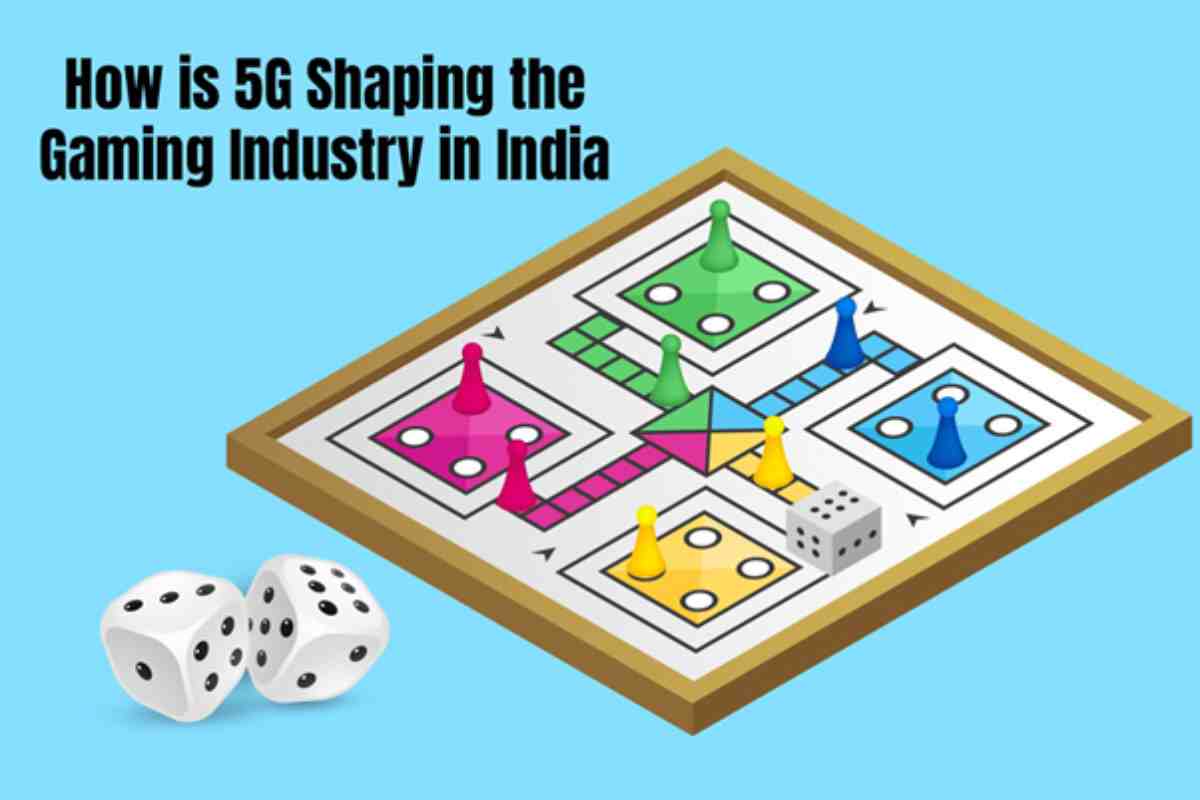
India’s gaming industry has undergone a remarkable transformation over the past decade. Once dominated by casual mobile games and limited connectivity, it has grown into a vibrant ecosystem powered by technological advancements, investments in esports, and the rising popularity of mobile gaming.
The introduction of 5G technology is a pivotal factor that has reshaped the gaming landscape in India, ushering in a new era of high-speed, low-latency, and immersive gaming experiences. India launched its first 5G network in October 2022, making one of the world’s fastest nationwide 5G network deployments. That’s not all! India’s 5G network ranks among the top-performing networks globally.
The rollout of 5G across India has ushered in a new era for gaming. Look at the several areas where the impact of 5G is evident.
- 5G and low latency
One primary way 5G transforms the gaming industry is through its promise of ultra-low latency. As you might know by now, Latency is crucial in gaming, particularly in genres like first-person shooters (FPS), racing, and multiplayer online battle arenas (MOBA), where every millisecond can affect the game’s outcome. If the latency is high, it will delay the data transmission.
Do you remember playing multiplayer online Ludo money games and not understanding why your turn was skipped? You can thank your 4G network for this. While you were thinking your turn never came, your opponents were waiting for you to roll the die. 4G networks are notorious for lag and frustrating interruptions.
With 5G, latency is reduced to as low as one millisecond, providing a seamless experience. This low-latency environment makes competitive gaming far more responsive, and the demand for esports and multiplayer games is growing as gamers can now enjoy near-instant responses between their devices and game servers.
- Boosting mobile gaming in India
India is primarily a mobile-first market for gaming, with a significant portion of the population relying on smartphones for entertainment. The rollout of 5G has amplified mobile gaming experiences by enhancing data speeds and network performance.
With 5G’s higher bandwidth, gamers can download large games within seconds, stream high-definition gameplay without buffering, and experience visually rich games even on mid-range devices. Due to these improved capabilities, mobile gaming titles such as “Call of Duty: Mobile,” “PUBG Mobile,” and “Genshin Impact” have seen a significant increase in players, further establishing India as one of the world’s largest mobile gaming markets.
- Augmenting the adoption of cloud gaming and the removal of hardware barriers
The concept of cloud gaming, where games are hosted on remote servers and streamed directly to devices, has gained significant traction globally. However, its success in India was previously hampered by inconsistent internet speeds and network limitations. The arrival of 5G changes this by providing the necessary infrastructure to support cloud gaming, eliminating the need for gamers to own expensive hardware to play AAA titles.
Cloud gaming platforms such as Google Stadia, Microsoft’s xCloud, and NVIDIA’s GeForce Now are poised to capitalize on India’s growing gaming market. With 5G, gamers in India can access a wide array of high-end games on their smartphones, tablets, or even low-end PCs, democratizing access to gaming content.
- Enhancing VR and AR gaming experiences
5G’s enhanced data speeds and reduced latency are crucial for developing Virtual Reality (VR) and Augmented Reality (AR) gaming. While VR and AR gaming have been in their infancy in India, 5G solves issues like latency, bandwidth, and connectivity to open the doors for the mass adoption.
With 5G, gamers can enjoy more realistic and interactive VR/AR experiences. For example, AR-based mobile games like “Pokémon Go” could evolve to provide more complex, immersive experiences that integrate real-world environments seamlessly with virtual elements. Similarly, VR games, which demand significant data transfer and real-time processing, will now be feasible on mobile devices, allowing more players to enter virtual worlds without wired connections.
This could lead to the rise of new gaming genres and applications in India, pushing the boundaries of how games are developed and experienced.
- 5G’s economic implications in growing the gaming ecosystem in India
The impact of 5G on gaming extends beyond gamers and developers. The overall gaming ecosystem, including game streaming platforms, esports organizations, content creators, and advertisers, will also experience growth.
As more users gravitate toward online multiplayer and cloud gaming, the demand for gaming-related services, advertising, and content creation will increase. Companies that offer gaming accessories, merchandise, and in-game purchases are expected to increase sales. At the same time, platforms like YouTube Gaming and Twitch will continue to grow their user base, driving advertising revenue.
Esports sponsorship and advertising opportunities will increase as more people engage in online gaming and live streams. This presents a lucrative opportunity for brands to target the younger, tech-savvy demographic that dominates India’s gaming scene.
Summing up
The introduction of 5G in India has set the stage for a revolutionary transformation in the gaming industry. From ultra-fast mobile gaming to the rise of cloud gaming, esports, and VR/AR experiences, 5G is reshaping how games are played, developed, and consumed across the country. As the technology continues to roll out across India, it is set to accelerate the growth of the gaming industry, making it one of the most dynamic and promising sectors in the digital economy.
India’s gaming ecosystem is now more accessible, immersive, and competitive than ever before, and 5G is at the forefront of this evolution, driving unprecedented innovation and growth across the industry.
